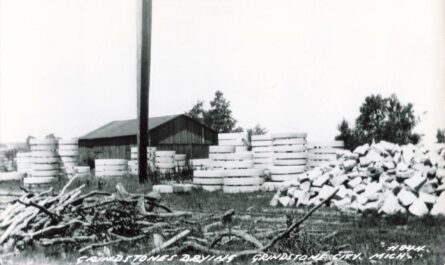EAST LANSING, Mich. — Michigan State University researchers report that solar panels on farmland are helping California’s Central Valley producers cut irrigation, stabilize revenue, and—when owners finance projects—sometimes out-earn traditional crops. The findings arrive as Michigan evaluates how to site utility-scale solar without undercutting food production.
Solar panels on farmland can boost financial stability while limiting irrigation demand, MSU study shows

A peer-reviewed analysis led by Jacob Stid with Annick Anctil and Anthony Kendall assessed 925 arrays across California’s Central Valley and found that solar panels on farmland displace some crop output but improve farm-level economic security and water sustainability. Their work indicates targeted siting and agrivoltaic designs can protect high-yield acres (Stid et al., Nature Sustainability, 2025).
Place solar panels on farmland to low-yield ground and grazing-ready designs
MSU’s July 2025 guidance notes owners may see higher per-acre returns than planting, while leases provide steadier—but smaller—cash flows with minimal risk. For Michigan, the practical path is placing solar panels on farmland with poor yields, drainage issues, or proximity to interconnection, and using elevated racking for grazing where feasible.
More farms are adopting renewables, largely solar
The USDA 2022 Census of Agriculture counted 153,101 operations with renewable energy systems; most used solar. That growth, paired with California data showing sizable irrigation savings tied to fallowed irrigated acres, frames the trade-offs Michigan planners must weigh (Fast Company, 2025; Public Policy Institute of California, 2022).
Agrivoltaics: protecting crops while scaling clean energy
The MSU team points to agrivoltaics—solar designed for grazing or shade-tolerant crops—and to siting solar panels on farmland that is marginal, saline, flood-prone, or slated for rotation, rather than converting top-producing fields. For Michigan, that could mean prioritizing underperforming acres, former industrial parcels near substations, or hybrid systems that allow livestock access beneath elevated racking. The researchers say the goal is not to replace agriculture, but to diversify farm income streams in a period of climate and market volatility (MSU Today, 2025).
What’s next for Michigan farmers considering solar panels on farmland
For growers, the due diligence list is straightforward: confirm grid access and interconnection costs; compare ownership vs. lease cash flows; assess soil class and drainage; engage local planners early; and document water-use changes if fallowing irrigated acres. For communities, the priority is clear standards that protect prime soil and maintain township tax bases while allowing projects that help keep family farms afloat.
Related Coverage
- California’s water-supply constraints and SGMA compliance pressures frame the Central Valley’s solar shift. See statewide context on groundwater and solar development for agriculture.
- National adoption data shows a rise in on-farm renewable energy systems, led by solar.
Sources Cites
Stid, Jacob T., et al. “Impacts of Agrisolar Co-location on the Food–Energy–Water–Economy Nexus in California’s Central Valley.” Nature Sustainability, 2025. https://www.nature.com/articles/s41893-025-01546-4
“Expert: Solar Panels Helping Farmers Save Water, Earn Income.” Michigan State University Today, 28 July 2025. https://msutoday.msu.edu/news/2025/07/expert-solar-panels-helping-farmers
“Should Farm Fields Be Used for Crops or Solar? MSU Research Suggests Both.” Michigan State University Today, 21 Apr. 2025. https://msutoday.msu.edu/news/2025/should-farm-fields-be-used-for-crops-or-solar-msu-research-suggests-both
“USDA Releases 2022 Census of Agriculture Data.” U.S. Department of Agriculture, NASS, 13 Feb. 2024. https://www.nass.usda.gov/Newsroom/2024/02-13-2024.php
“Farming and Solar Power Can Complement Each Other in California’s Central Valley.” Fast Company, 18 July 2025. https://www.fastcompany.com/91369414/farming-solar-power-california
“Solar Energy and Groundwater in the San Joaquin Valley.” Public Policy Institute of California, 2022. https://www.ppic.org/publication/solar-energy-and-groundwater-in-the-san-joaquin-valley/
Read More Interesting Feature Stories From ThumbWind
- Michigan Feature News Stories — Unveiling the diverse and vibrant people, captivating places, and remarkable events that come together to make the Great Lake State unique.
- Strange Political News — A sarcastic take on official news from around the U.S., exploring the absurdities that often arise in the political landscape while providing a humorous perspective on current events and highlighting the quirks of politicians and policies.
- Michigan Hometown News — News and events from Michigan’s Upper Thumb region worth knowing, including local stories, impactful interviews, and updates on community happenings that shape the culture and lifestyle of the area.
Your Turn – Like This, or Hate it – We Want To Hear From You
Please offer an insightful and thoughtful comment. We review each response. Follow us to have other feature stories fill up your email box, or check us out at ThumbWind News.




